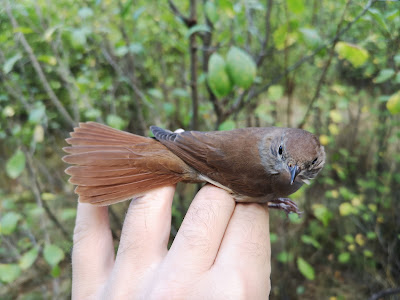We have a very dry and warm summer here in Bulgaria this year and I was not sure if, at that time of the month, there would be enough bird movement for the proper ringing session, but since it's been a while since my last ringing with the nets I decided to just go for it and see how it goes.
I woke up at 04:30 and set up only two nets at my usual rining place - 1x9m and 1x12m.
Initially, I was planning to use sound, but my portable speaker decided to give up on working so I had to continue without it.
The totals for the mourning were more than what I expected and the variety of species was a nice addition. I even recorded the full ringing session for YouTube so If you are interested you can check it out later in the posts.
Total: 28
Blackbird(Turdus merula) - 11
Common nightingale(Luscinia megarhynchos) - 3
Blackcap(Sylvia atricapilla) - 5
Whitethroat(Sylvia communis) - 2
Lesser whitethroat(Sylvia curruca) - 2
Great tit(Parus major) - 2
Blue tit(Cyanistes caeruleus) - 1
Red-backed shrike(Lanius collurio) - 1
Reed warbler(Acrocephalus scirpaceus) - 1
















.jpg)
.jpg)




